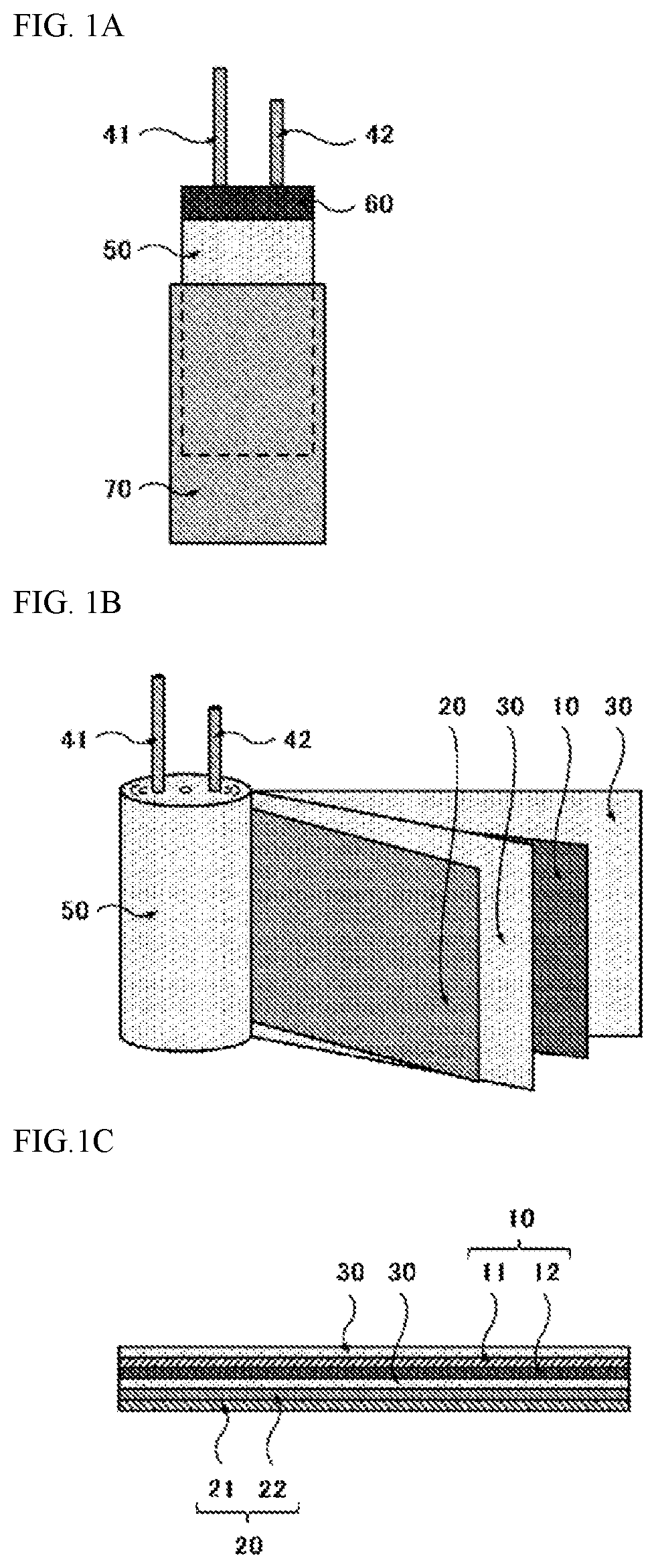Lithium ion capacitor
a technology of lithium ion capacitors and capacitors, which is applied in the direction of capacitors, electrolytic capacitors, nitrogen and non-metal compounds, etc., can solve the problems of high-temperature reliability of the device, so as to improve the low-temperature characteristics of the device, and improve the reliability of the devi
- Summary
- Abstract
- Description
- Claims
- Application Information
AI Technical Summary
Benefits of technology
Problems solved by technology
Method used
Image
Examples
example
[0034]The present invention is explained in greater detail below using an example. It should be noted, however, that the present invention is not limited to the embodiment of the example.
[0035][Manufacturing Method]
[0036]A slurry containing polyacene semiconductor substance (PAS) as an electrode active material, as well as carboxy methyl cellulose and styrene butadiene rubber as a binder, was prepared and this slurry was applied on an aluminum foil to obtain a positive electrode. A negative electrode was produced in sheet shape by preparing a slurry containing non-graphitizing carbon made of phenol resin material, as an active material, as well as carboxy methyl cellulose and styrene butadiene rubber as a binder, and then applying the slurry on a perforated copper foil. Cellulose separators were sandwiched between these electrodes, after which lead terminals were attached to current collectors by means of ultrasonic welding, and they were wound together into an element which was the...
PUM
| Property | Measurement | Unit |
|---|---|---|
| temperatures | aaaaa | aaaaa |
| temperature | aaaaa | aaaaa |
| temperature | aaaaa | aaaaa |
Abstract
Description
Claims
Application Information
 Login to View More
Login to View More - R&D
- Intellectual Property
- Life Sciences
- Materials
- Tech Scout
- Unparalleled Data Quality
- Higher Quality Content
- 60% Fewer Hallucinations
Browse by: Latest US Patents, China's latest patents, Technical Efficacy Thesaurus, Application Domain, Technology Topic, Popular Technical Reports.
© 2025 PatSnap. All rights reserved.Legal|Privacy policy|Modern Slavery Act Transparency Statement|Sitemap|About US| Contact US: help@patsnap.com

